Easy peanut curd chutney recipe, aka farali peanut chutney recipe, a perfect side/condiment for flatbreads and others tiffin items!
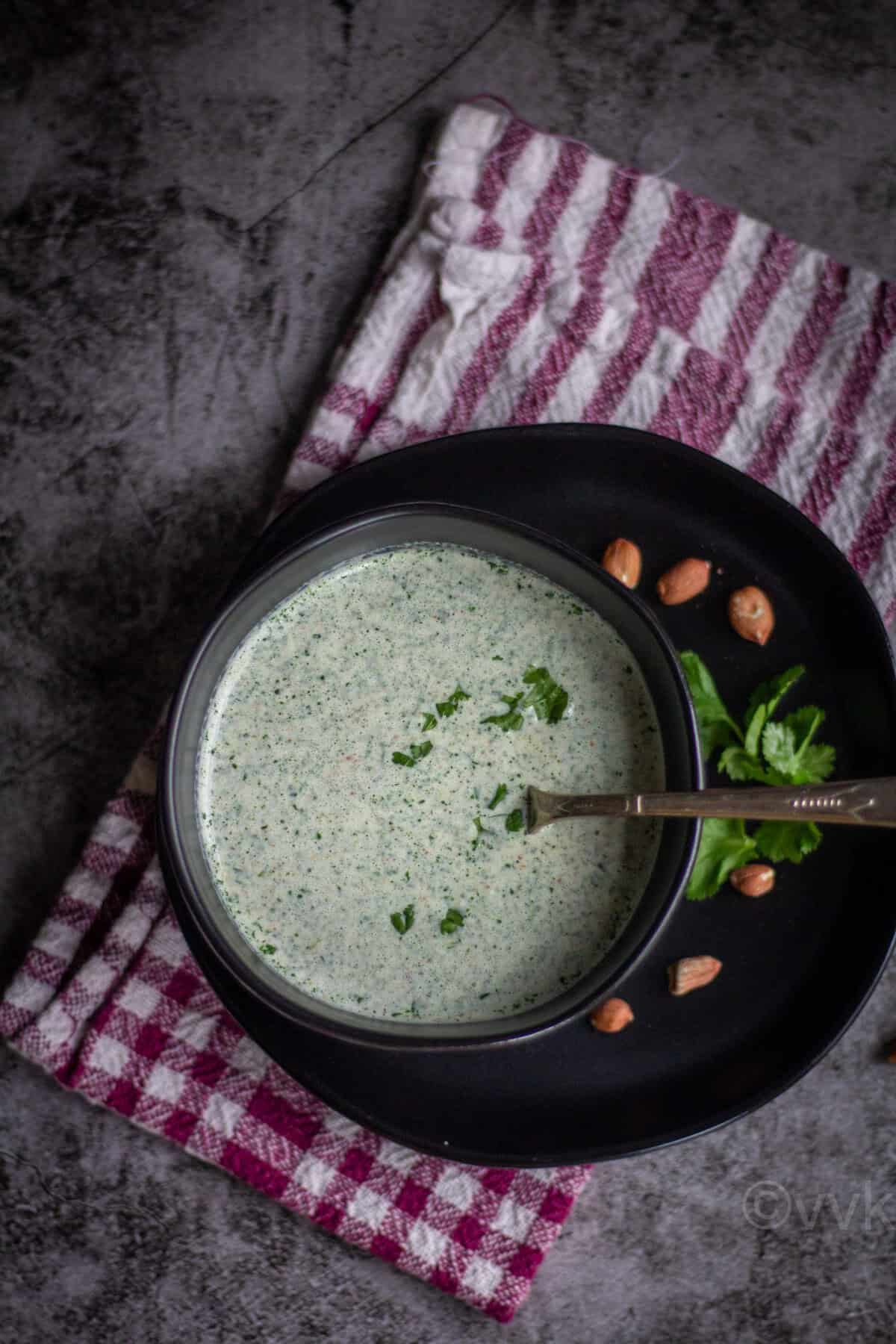
I am back with another easy chutney recipe like the roasted gram chutney, and this time, it’s the farali peanut chutney. Farali means feasting, and this peanut curd chutney is typically made during vrat/auspicious or fasting days.
It’s a super simple recipe and a beginner-friendly and bachelor-friendly recipe. First, we roast the peanuts, add cook ginger, chili, and cilantro, and let it cook in the residual heat. Then grind it with yogurt.
Jump to:
It’s more like South Indian style pachadi; you can call it verkadalai pachadi too. :-) If you use store-bought roasted peanuts, there is no cooking involved too.
Note: As I mentioned in the buckwheat dosa recipe, in our household, we don’t fast during Navratri, and I learned about the grains that we can consume during this fast from my friends. Please use the ingredients as per your custom.
Ingredients required
You need only a handful of ingredients for this chutney.
Peanuts: It’s the key ingredient, and I have used peanuts with skin. You can use skinned ones, too and if using store-bought roasted ones, make sure to use unsalted ones.
Yogurt: We don’t add any water to grind; instead, we use yogurt. I have used whole milk yogurt. You can use reduced-fat yogurt or plant-based yogurt of your choice.
Rock salt: Typically, rock salt or sendha namak is used to season the farali or fasting food. If you are not making this for fasting, use the salt of your choice.
Peanut oil or ghee: This is optional. I have used a little oil to roast the peanuts. You can roast it without oil too. Use oil of your choice if you are not making it for fasting.
Along with these ingredients, I have also used cilantro, ginger, green chili, and cumin seeds to flavor the chutney. Please check the recipe card for measure details.
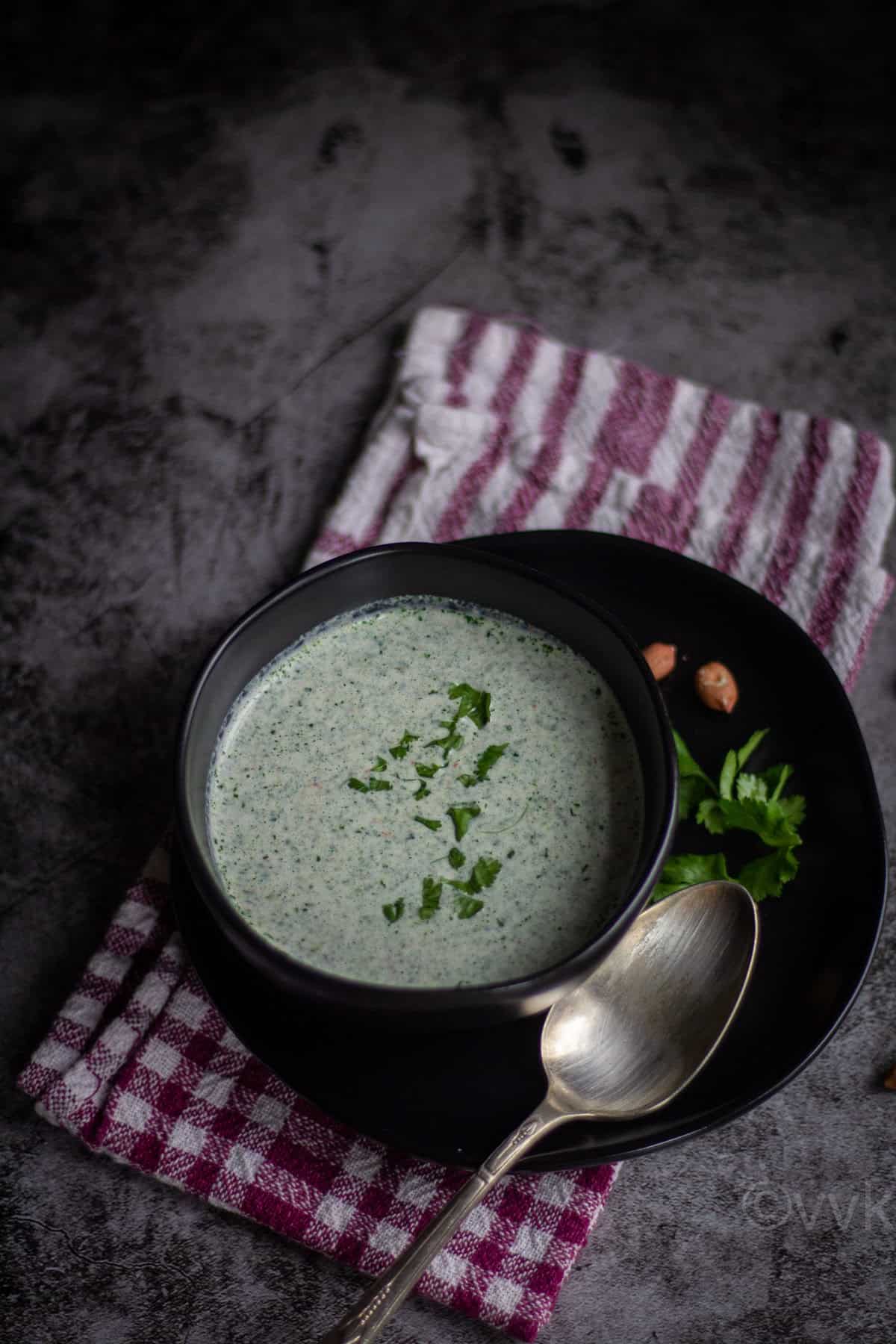
Dietary specifications and serving suggestions.
This farali peanut chutney is a gluten-free, vegetarian recipe. You can very use plant-based yogurt for a vegan version.
I always make a small batch as required, and I have never stored this chutney for more than one day.
While you can serve this chutney with sabudana vada, sabudana khichdi, vrat ki roti, paratha, you can also serve this with idli and dosa.
How to make farali peanut chutney
- Heat a pan or kadai and add ½ tsp oil. When the oil is hot, add the peanuts and roast for about 3 to 4 minutes or until the skin browns slightly.
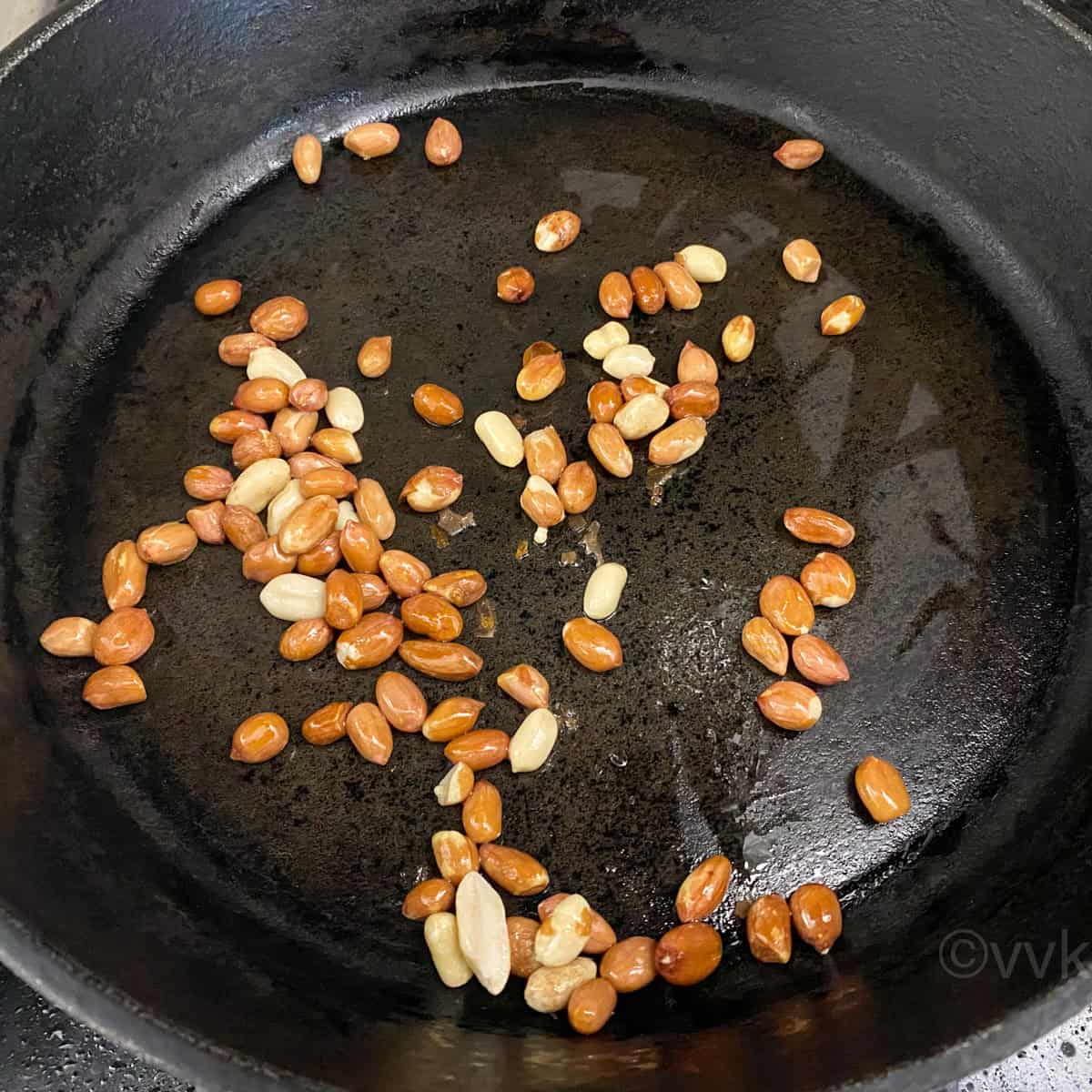
- Now add the cilantro, green chili, and ginger. Saute for a minute and turn off the heat. The cilantro will wilt in the residual heat.
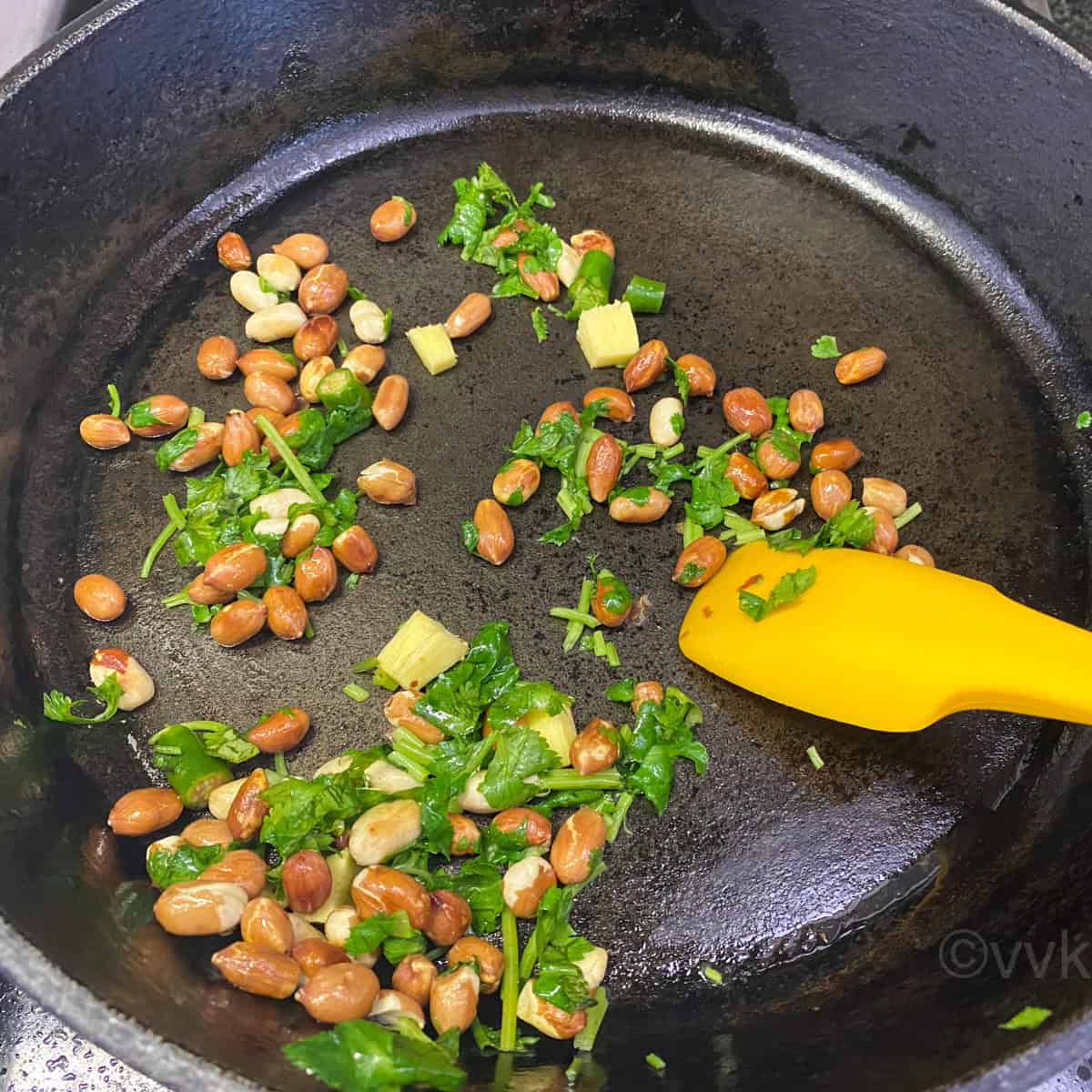
- Let this mixture cool and transfer it to a mixer jar. Add the cumin seeds. Pulse coarsely without adding any water.
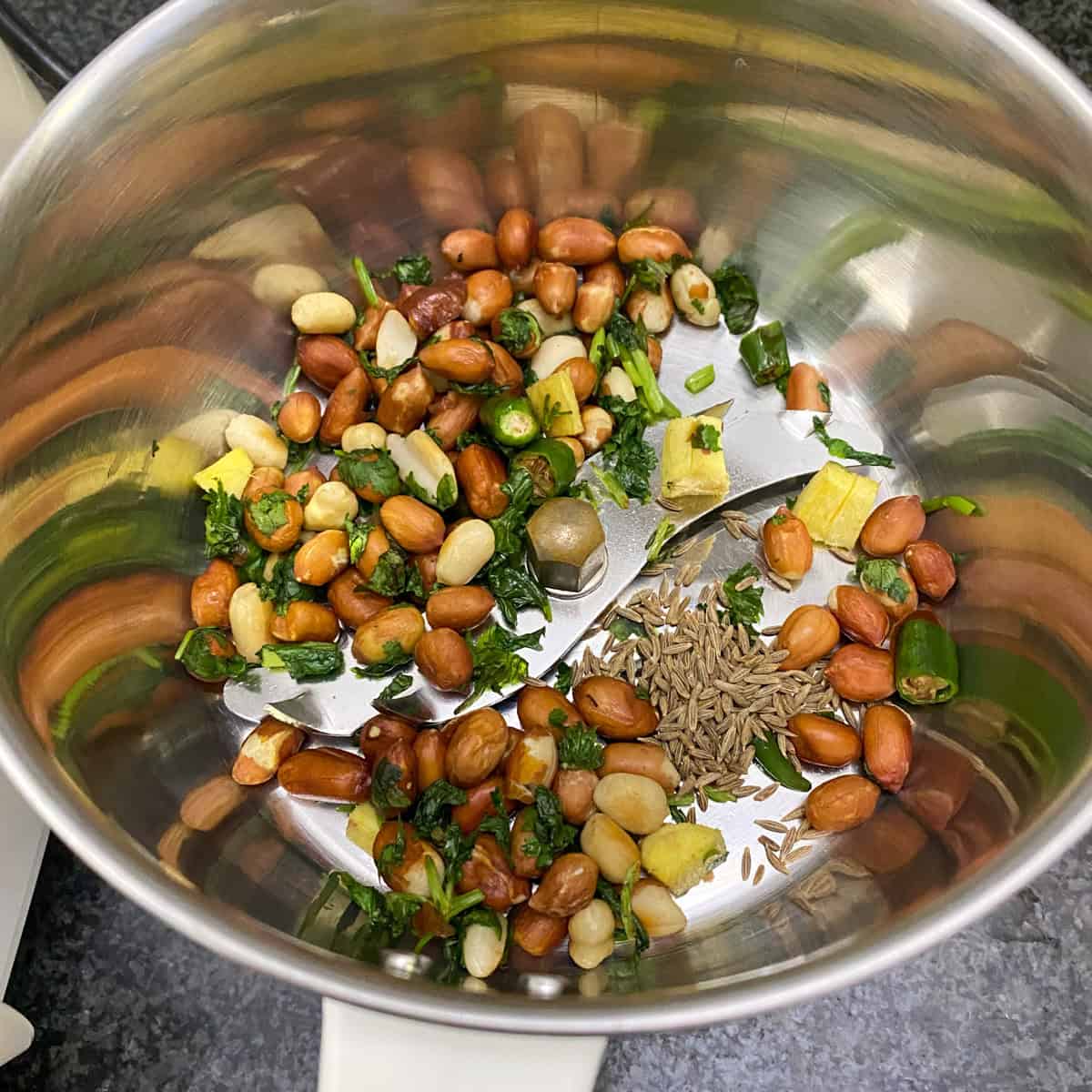
- Then add the yogurt and salt.
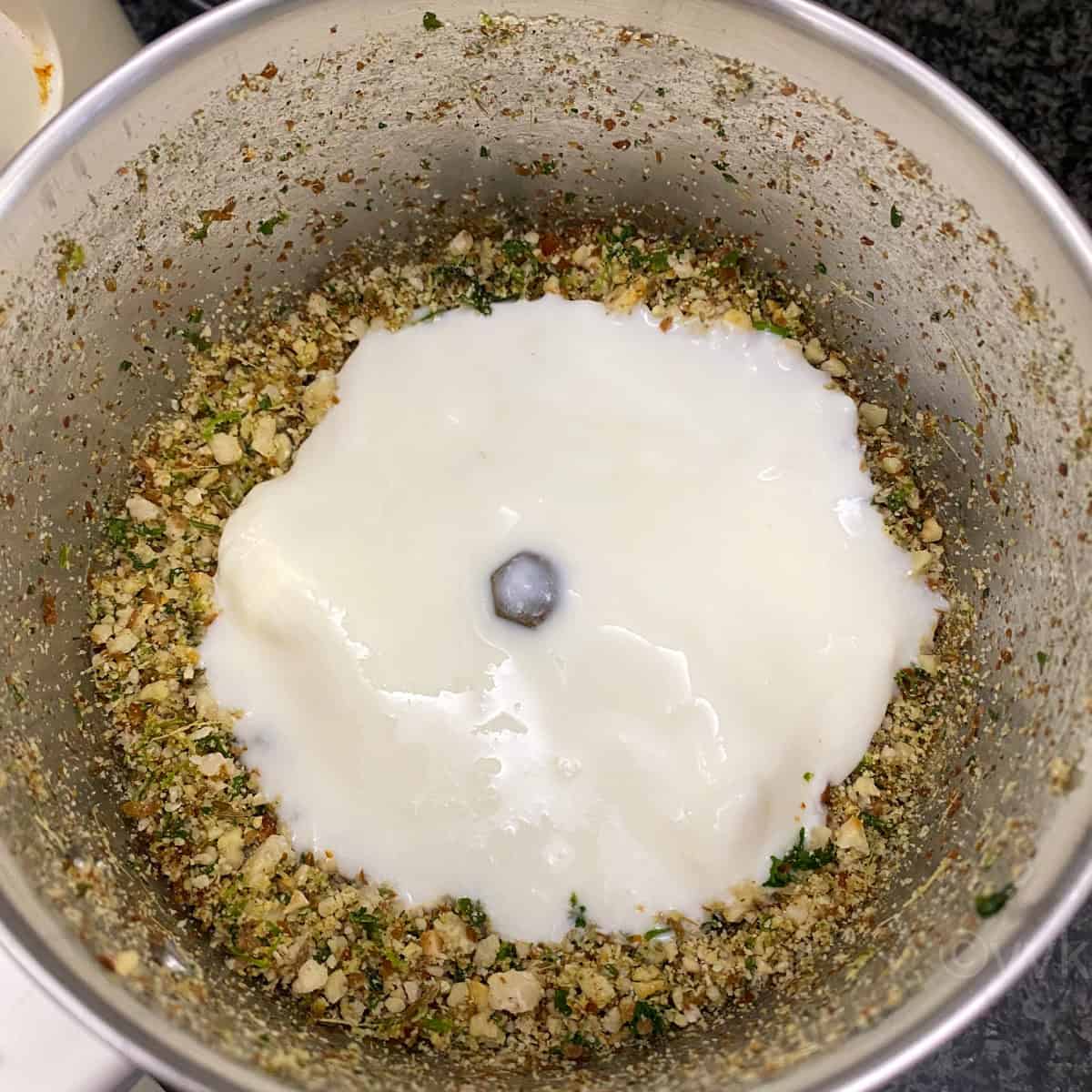
- Grind it, transfer it to a serving bowl, and serve it with roti or sabudana vada or dosa. I served it with my buckwheat dosa.
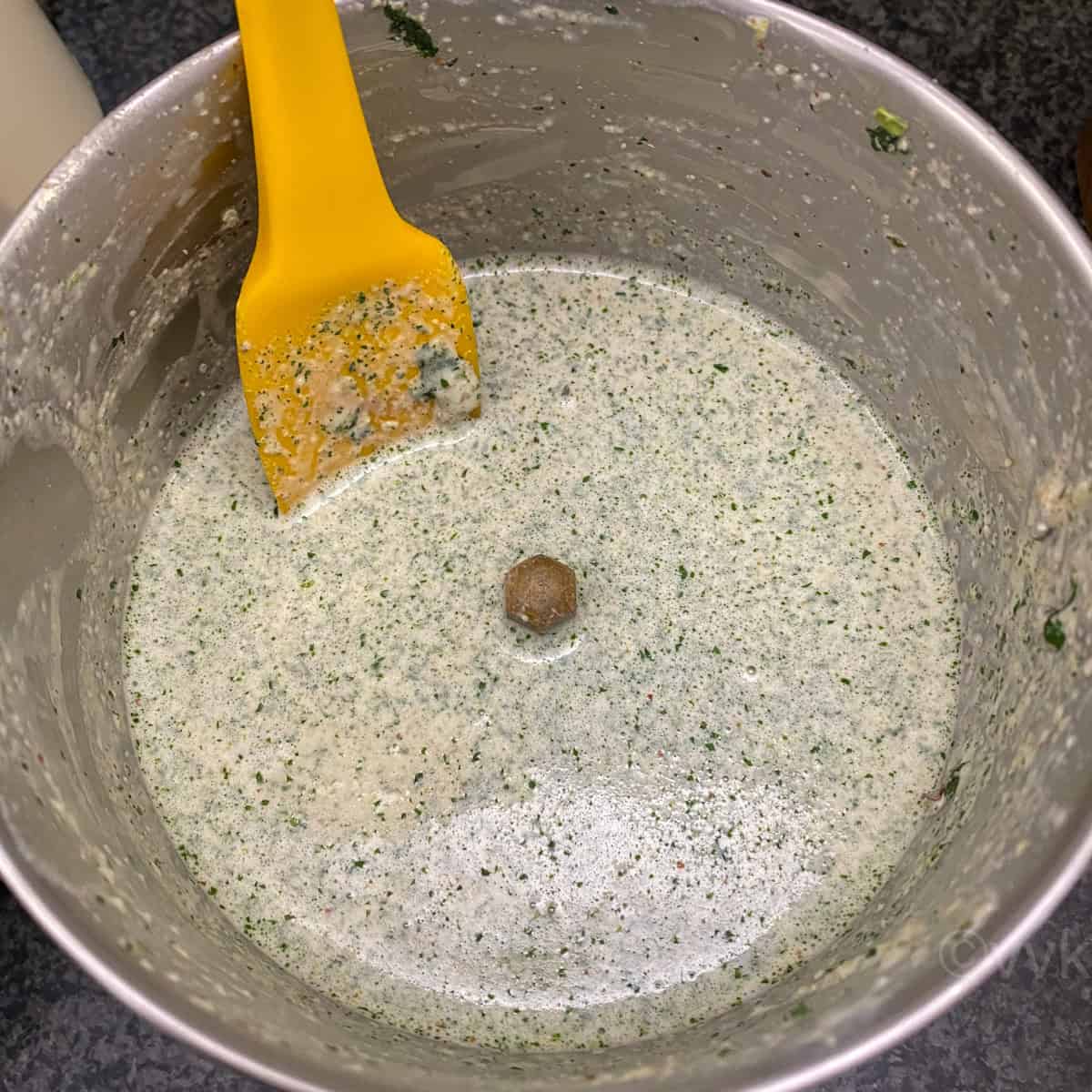
Recipe notes
- Adjust the green chili and salt to taste.
- You can also roast cumin with peanuts. Add it along with cilantro, chili, and ginger.
- I haven’t tried this chutney with plant-based yogurt. You can try peanut curd or other curds that are allowed during fasting.
- I usually don’t remove the peanut skin. If you don’t prefer, you can remove the skin. Let the roasted peanuts cool and rub them with your hand to remove the skin.
- If using store-bought roasted peanuts, make sure to use unsalted ones, and you can grind all the ingredients without roasting (including cilantro, chili, and ginger).
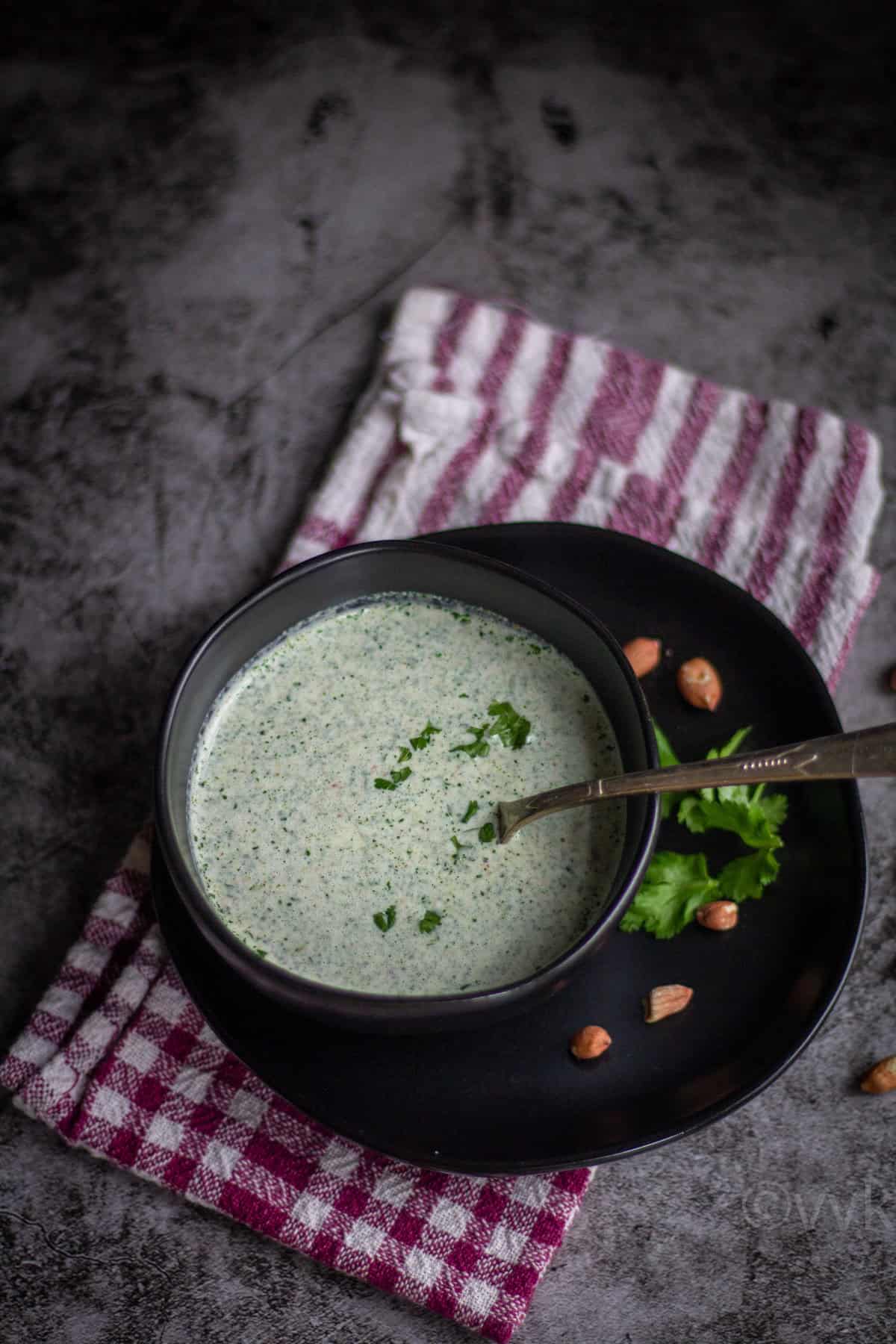
Explore other chutney recipes for idli and dosa
PS: If you try this farali peanut curd chutney, please don’t forget to comment and rate this recipe. If you have any questions, please leave a comment, and I will get to it ASAP. Make sure to follow me on my Pinterest for more healthy and delicious ideas! Follow me on Instagram or join my Facebook Group for more recipe updates! You can also sign-up for my newsletter for weekly updates.
📖 Recipe
Farali peanut chutney | Peanut Curd Chutney
Equipment
- Pan or kadai
- Mixer jar or coffee grinder
Ingredients
Measurement Details: 1 cup=240ml; 1 tbsp = 15ml; 1 tsp=5ml;
- ½ tsp peanut oil or ghee
- ¼ cup peanuts
- 2 tbsp cilantro
- 1 green chili
- 1- inch ginger
- ½ tsp cumin seeds
- ½ cup curd
- ½ tsp rock salt or to taste
Instructions
- Heat a pan or kadai and add ½ tsp oil. When the oil is hot, add the peanuts and roast for about 3 to 4 minutes or until the skin browns slightly.
- Now add the cilantro, green chili, and ginger. Saute for a minute and turn off the heat. The cilantro will wilt in the residual heat.
- Let this mixture cool and transfer it to a mixer jar. Add the cumin seeds. Pulse coarsely without adding any water.
- Then add the yogurt and salt.
- Grind it, transfer it to a serving bowl, and serve it with roti or sabudana vada or dosa. I served it with my buckwheat dosa.
Notes
- Adjust the green chili and salt to taste.
- You can also roast cumin with peanuts. Add it along with cilantro, chili, and ginger.
- I haven’t tried this chutney with plant-based yogurt. You can try peanut curd or other curds that are allowed during fasting.
- I usually don’t remove the peanut skin. If you don’t prefer, you can remove the skin. Let the roasted peanuts cool and rub them with your hand to remove the skin.
- If using store-bought roasted peanuts, make sure to use unsalted ones, and you can grind all the ingredients without roasting (including cilantro, chili, and ginger).
Nutrition
I am not a nutritionist. The nutritional information is provided as a courtesy and is an estimate only. It varies depending upon the product types or brands.



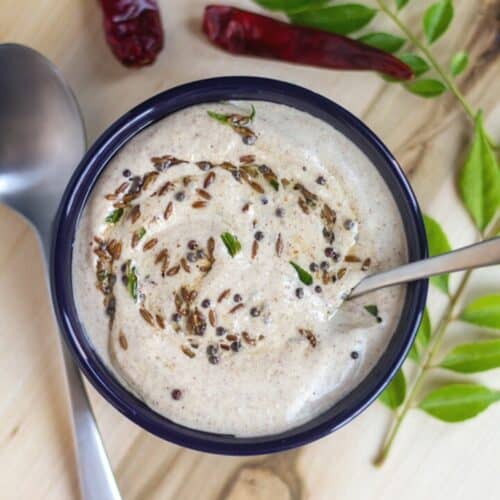
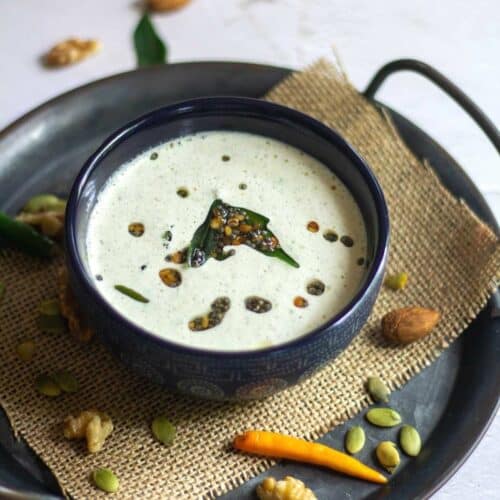
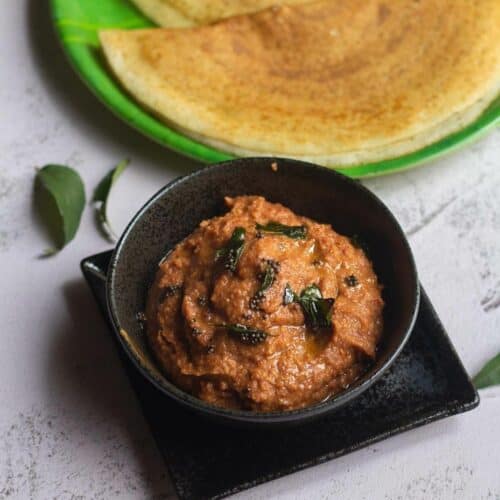
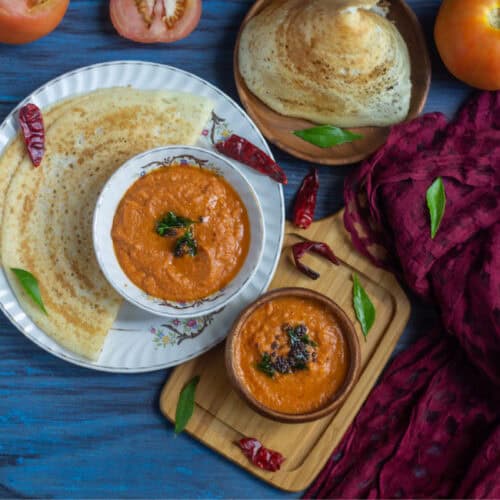


Leave a Reply